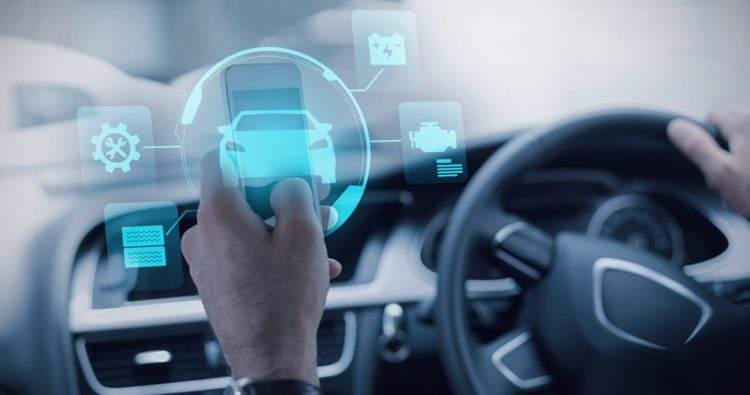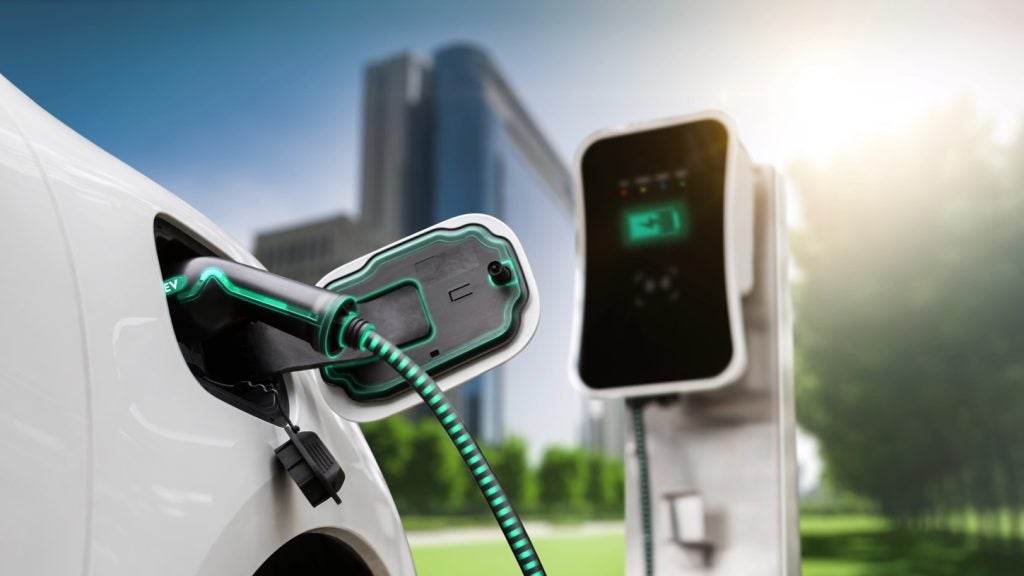
While connected cars present clear revenue opportunities for OEMs, motor lenders are searching for ways to leverage the trend. Motor Finance examines the potential to monetise data from connected cars, while improving service and creating more innovative and transparent finance products.
Sponsored by Intelligent Environments
By 2020, research firm Gartner predicts that the number of connected cars produced annually will reach 61m. That compares to just 12.4m in 2016. Not only is the production of connected cars increasing globally, the revenue opportunities associated with them are also growing.
According to KPMG’s 2017 Global Automotive Executive Study, 76% of respondents believe that one connected car can generate more revenue streams than 10 conventional cars, largely thanks to the data they provide. In fact, 80% of executives agree that data will be the fuel for future business models, and 83% believe they will make money from that data.
The key word here, though, is ‘believe’. The connected car industry is very much in its infancy. As such, it can be challenging to see precisely where the opportunities lie and to gauge quite how large they might be, especially from a motor finance lender’s perspective.
As Tom Stinton, head of product at Intelligent Environments, explains: “I would say the connected car is currently similar to the iPhone within a year or two of its launch. People were just starting to get a real inkling of what a smartphone could do, but not everyone had one. Likewise, the providers of apps and services were only just learning what the capabilities were,” he notes.
How well do you really know your competitors?
Access the most comprehensive Company Profiles on the market, powered by GlobalData. Save hours of research. Gain competitive edge.

Thank you!
Your download email will arrive shortly
Not ready to buy yet? Download a free sample
We are confident about the unique quality of our Company Profiles. However, we want you to make the most beneficial decision for your business, so we offer a free sample that you can download by submitting the below form
By GlobalDataLooking at the current state of play for connected cars, Stinton says many new vehicles have screens built into their dashboards and “infotainment” systems that offer wireless connectivity, so the technology is “getting there”. The challenge, however, is that “no one has really figured out the best way of using it yet.”
This notion of early-stage tech that requires a more concrete value proposition is echoed by Spencer Halil, managing director of Alphera. Aside from insurers using telematics to tailor premiums and investigate accidents, he says one of the most interesting connected car innovations right now is the Citroen C3, which can take photographs and send them back to social media platforms.
“Examples like this show that technology is just on the brink of doing something really interesting,” he comments. “But we’re not entirely sure how we fit into that yet.”
Lauren Pamma, head of fleet consultancy at Lex Autolease, agrees that connected car technologies – and their benefits – still require some development. She says: “On a scale of one to 10, we’re at two or three at the moment. Cars can connect to the radio, or to a smartphone, and they can send data back to the OEM, but they’re not yet at the stage where they’re talking to other cars, or sending traffic information, for instance.”
Of course, some manufacturers are starting to push the boundaries. “Jaguar’s cars now talk to Shell petrol stations, for example,” says Pamma. Yet the vast majority of connected cars still have much greater potential to achieve.
According to Jean-Louis Labauge, managing director of RCI Financial Services, connected cars are a “foundation brick” for the move away from car ownership towards usership, and the general trend towards providing mobility solutions or services.
This is something Labauge sees as developing rapidly, and notes: “We are not talking of fiction, we are not talking of something that will happen in 30 years; we are preparing ourselves to be ready for that.”
Before connected cars are able to truly flourish, though, Allan Cummings, digital channel manager at Moneybarn, believes network speeds must be improved. “Lack of access to high-speed networks is an Achilles’ heel in the connected car development path – at least for the immediate future,” he says. “Access to 4G and 5G networks will therefore provide a step change within the connected car market.”
Revenue drivers
Against this backdrop of challenging network speeds and the very nature of the nascent connected car industry, Cummings believes it is too early to speculate on what direct opportunities are exploitable within that market. There are too many uncertainties to take into account, including the fact that “not all connected cars or services are equal; they vary significantly according to the OEM’s level of adoption and implementation,” he says.
What is certain, however, is that connected cars are more expensive than conventional vehicles. Chris Bosworth, director of strategy at Close Brothers Motor Finance, explains that the tech being incorporated into connected cars is already translating into an increase of around 30% in automotive revenue pools. For motor finance lenders, he says the higher ticket value is a double positive, “not just because we’re lending more money, but the higher loan size is also good from the point of view of operational costs, since it’s more efficient to process bigger loans.”
Another positive Bosworth sees from connected cars is that the renewals cycle may accelerate. “Just as people want to change their mobile phones more often, people may want to change their cars more frequently as well. We’re already seeing that to some extent. Where people used to buy a new car every five years, that has now shortened to every three years; but it could come down to every two years if people want the cutting-edge connectivity services that come with these high-tech cars. That will provide another boost to the motor finance industry.”
There is a far more significant opportunity coming down the line, however. Today, data is a digital currency in its own right – and connected cars, together with the Internet of Things (IoT), are bringing about a paradigm shift in how much data can be collected from vehicles.
According to Cummings, connected data falls broadly into three categories: vehicle OEM service and accident related data, enhanced user experience data streaming from third party services and OEM service partners, and incidental data from associated technologies, such as car-to-car and street-to-car data interactions. Each will have its own use, and together they will create a fully connected car. For lenders, this presents numerous opportunities, ranging from better customer service to new financing propositions and strategic marketing windows.
“From a finance company’s point of view, the real opportunities are going to come when we create apps that allow the customer to interact with their car,” states Halil. “Those apps will then become the platform the customer uses for interacting with their finance company and their manufacturer. For instance, the driver might use the same app that they use to interact with their car to check figures in their finance contract, like mileage. It’s an opportunity for motor finance lenders to become a valuable part of the connected car ecosystem.”
New finance products
Becoming “valuable” is about much more than having an app presence, though. Adjusting business models to fit with the new ecosystem will also be critical. As Bosworth notes: “Motor finance lenders need to start thinking about financing mobility rather than financing cars. At the moment, if you take a PCP agreement, we ask people to predict what mileage they’re likely to do, and then we assess the car’s wear-and-tear at the end of the agreement. In a connected car, you could do that dynamically on a pay-per-mile basis – rather like a smart meter does for electricity.”
The customer would still be charged a regular amount every month, he stresses, but they would be able to see whether they are in debit or credit, based on their mileage or the wear on the car. “That would be a much more transparent finance product than a PCP where the driver essentially guesses their mileage at the beginning and says they’ll take really good care of the car, and then three or four years later when they hand it back, they’ve done twice as many miles and twice as much damage, leaving them with a big bill to pay.”
Labauge says the rise of connected cars means finance houses have the opportunity to develop new services beyond traditional financing. An example at RCI is the new Micra, which comes with a car-sharing solution provided by RCI Financial Services.
Lex Autolease’s Pamma, meanwhile, sees safety benefits and added-value opportunities in gathering data around mileage and speed. “Using telematics, it would be possible to send alerts to the customer letting them know that the way they drive is costing them £10 extra in fuel each month and suggesting ways to save on their fuel, including driving tips and alerts for petrol stations with cheap prices nearby.
“The tech could also alert customers – and insurers – to instances where they are braking or accelerating too quickly, or cases of speeding, as well as letting them know if they’ve been driving for too long without a break,” she explains.
Elsewhere, location data could be used to make the life of customers and finance providers that much easier. As Stinton notes: “If you’ve got an agreement that says the driver must notify you when you’re going abroad, then having the car do that on the driver’s behalf off the back of its geolocation, with the driver just confirming the details from the dashboard, means the finance provider gets the information they need on a timely basis, and it’s one less thing for the customer to worry about.”
An additional benefit of location tracking, especially for lenders in the subprime market, is that there is “even more security over the asset, because you know where it is at all times and you’ll be able to go out and recover it if the worst comes to worst,” says Pamma. Nevertheless, Karl Werner, divisional CEO of motor finance at MotoNovo, says that whether you are tied into an OEM or are an independent finance provider, “tracking cars isn’t really the priority.”
He raises the question of whether tracking is a breach of treating-customers-fairly rules, adding that “agreeing to lend based on the ability to track a car, rather than affordability or other assessments, is probably not the wisest thing to do.”
Werner would far rather look at the opportunities without any of the “boring, traditional perspective around recovering an asset.” Instead, he advocates thinking about what connected cars and data mining could do for the customer, as well as the lender’s product mix.
Thinking big
With that in mind, it is important to remember that the potential of connected cars goes far beyond existing propositions. There is scope, in the future, for lenders to extend their offerings into exciting new territories, like payments from the dashboard of a connected car.
Stinton says: “If you’re a car finance company, you’ve already got some form of direct debit or financial connection with the driver. Using that direct debit, or by asking the customer to register their debit or credit card details, all of a sudden you can talk about using the dashboard screen, speakers and microphone as a means for people to make payments.”
These payments, he elaborates, could be for goods at a petrol station or drive-through. They could be used at tolls or car parks, and there could potentially be a link with the congestion charge in London, for example.
“If you’re the finance provider, and you’re enabling people to make those payments securely, safely, and easily, then that gives you an opportunity to source even more data on the driver,” he adds.
While Pamma says this is a “long way off” she agrees that the car becoming a customer’s payment system would allow lenders to access data around payment behaviour. In turn, this should enable motor finance companies to better understand how the customer spends their money, and what their future financing needs may be.
Finance houses are in many ways better positioned to deliver these services than parent manufacturers, according to Labauge, because they are already used to regularly interacting with the end customer.
Payment options built into connected cars also offer more brand exposure, Stinton continues. “One of the biggest challenges for car finance companies, if they’re not with the OEM, is that people tend to forget the details of who is providing the finance.
“If you’ve got some connected car applications which are branded from a finance perspective, you’re helping to keep your brand front of mind, ready for when the driver is thinking about upgrading
their car.”
Another future opportunity for lenders to consider is the communication between different connected cars on the road. “This will enable real-time traffic flow information, real-time reporting of incidents and accidents, and even potentially real-time weather information, based on the temperature the car is reading, or the speed of the windscreen wipers, for instance,” explains Halil.
All this data gives rise to significant monetisation opportunities, and Halil believes that in the not-too-distant future, “the car will be far less important than the data-driven opportunities in terms of total value to an organisation like BMW.” At that point, “the price that cars are sold for becomes far less important. Getting them out on the road in a huge quantity, would be more vital,” he muses.
This leads on to the concept of the “zero -dollar car” whereby data from a connected car can be sold off to third parties, meaning that a customer can run their car for free.
Pamma says: “You can sell the traffic data off to the highways agency, sell data about the weather off to the weather channel and so on. Then it doesn’t cost you anything to run your car because you’ve sold your data.
“Whether people will be happy to do that and sign away their privacy is another matter, though.”
Data ownership
Pamma’s point gets to the heart of two of the toughest questions in the connected car market today: Who owns the data – and what are the privacy rights around that data?
There are no straightforward answers, although Labauge notes that all players will have to behave in a customer-centric manner, and get to know their customer much better than they have in the past.
The consensus is that more legal work needs to be done in this area, and soon. “As an OEM, and even a lender, you’ve got to get your approach to data gathering and data privacy right,” says Halil. “The implications if you get it wrong are really quite significant. The last thing you want to do is burn customer confidence by doing it incorrectly or being too heavy-handed around your messaging.”
Furthermore, driver data gathered in one channel cannot necessarily be used in another, or for promotional purposes.
“We can use the customer data that we capture to provide a service to our customers, such as sending their annual statement, but that doesn’t give us permission to also send them a marketing message,” says Halil.
“They have to let us know that they’re happy for us to do that. It’s not even the case that data captured via one channel, like email, allows us to communicate across another, like SMS. That’s a big question that is going to be fundamental to how the whole connected car space evolves.”
Labauge describes the use of data as a balancing act: Customers want to know their data is being protected, but at the same time will expect the OEM to remember what deal they have with the finance company, what type of car they’ve got, the car’s colour, and so on. “This is where we have to be innovative, and where we have to be in a position to overcome the difficulty rising from this contradictory customer expectation,” he adds.
MotoNovo’s Werner, meanwhile, feels that OEMs should be less inclined to tread on eggshells, and that data gathering is an accepted part of modern society. “The connected car data will end up being a condition of usage. For example, you can’t enter Disney World unless you give them permission to use your image and your data. You can’t opt out, that’s the end of it.
“That’s not to say that the data should not be safeguarded and treated with great care, but if you buy a connected car, you’re having your data taken and used by that manufacturer, end of story. If you don’t like it, you should go and buy another car.”
Whichever view prevails, one thing is sure: Independent finance companies need to think about how they compete with OEM finance companies in terms of data gathering.
Halil says: “I think that the OEM finance companies are probably going to be better equipped to take advantage of the connected car technologies, when those data ownership and privacy issues are tackled. By definition, the data will be available to the OEM companies, and probably not available to the independents.”
This is leading some independents to see a greater need for partnerships going forward. “The way that the finance company is going to be able to add value to the customer experience, is by being involved with the connected ecosphere that the OEMs create,” comments Halil.
Similarly, Pamma believes more partnerships will be required in the years ahead, not just between OEMs and finance companies, but also with “third parties that spring up in between and link the manufacturers and the finance companies using that data.”
This, says Bosworth, could lead to a “shared data model whereby the customer receives marketing disclaimers associated with the connected car. ‘Are you happy to share your information with the dealer? Are you happy to share your information with the finance house? Tick to say no, and if you don’t tick, it goes to whoever you didn’t tick the box for.’”
Cummings agrees, saying that independent finance firms will probably “access connected car data via third-party relationships that are most likely legally available for lender use, where opt-in consent could match existing privacy laws and therefore a legal relationship could be established.”
It is not just the OEMs that have direct access to driver data, however. The choice of
operating system (OS) within a connected car could mean that the likes of Google and Apple have a monopoly over data.
“Manufacturers have a tough choice to make,” says Stinton. “They have to decide whether they go with Apple or Android in-car OSs, whether they make their own, or whether they club together as car providers and do it themselves, without involving the big car companies.”
The advantage of going with Apple or Android, he says, is that those companies “know what they’re doing, and they provide a lot of services for free. It would enable an OEM to get off to a very fast start. And in the long term, one or both of those OSs will be an incumbent in the connected car space.”
The downside, however, is that “if Android is in your car, Google can collect a whole raft of information about the driver and what they get up to. As such, car manufacturers need to be aware that if they decide to use an external OS rather than build their own, they may be giving away unique data opportunities.”
An additional challenge is that customers are now waking up to the value of their data. For OEMs and lenders alike, this introduces an imperative to ensure the customer does not feel their data is being used for free. What’s more, as Cummings notes, connected cars are not necessarily linked to a single individual or occupant but by Vehicle Identification Number, exposing drivers’ data and behaviours without consent.
This, he says, will be impactful when connected cars are sold and test driven, “requiring access to driver data on a temporary basis, while still leaving a data footprint to be managed within the automotive sales cycle.”
Used car challenges
In terms of what happens to data in the used car market, Werner believes that this has not yet been thought through properly. He asks: “When a car changes hands, how do they amend the database so they know they’re tracking and marketing to someone entirely different?”
According to Bosworth, “Technically, when a customer gives their car back or sells it, the data is supposed to be wiped by the manufacturer and the next driver will start afresh. But who will actually be given access to that data on the next driver? Is it the finance house? Is it the dealer? Is it the manufacturer still, even though they weren’t the retailer of the vehicle? It’s quite uncertain at the moment.”
Pamma also believes that it is hard to have all the answers just yet. She confirms, however that, “in theory, the manufacturer’s system should be wiped completely when you reach the end of the first user. Then it should be pushed back into the used car again, via a system download, as a clean slate.
“Ultimately if the car is connected, you should just be able to remotely wipe everything that’s in it, and refresh it. That’s also how you make sure you’ve got the latest operating system in there.”
This will be a challenge for the used car industry as a whole, she says, because the rate of change of technology is so fast that while customers might be happy with a three- or four-year-old car, they will not want technology that is three or four years old.
What’s more, from a motor finance lender’s perspective, technology – especially old technology – can significantly impact depreciation curves.
Bosworth comments: “At the moment, a car’s useful life is around 15 years. When the value shifts away from the metal to the technology, the useful life might only be five years. So, even if someone is changing their car every year, you’ve only really got three or four owners of a vehicle before it is effectively worthless.” Used car lenders must therefore keep “right on top of the valuation companies and make sure that they know how to assess the technology correctly.”
Elsewhere, Bosworth says lenders in the used car market should expect to see more price negotiations with customers based on the value of data: “You might find that the customer will start say to the dealer, ‘you can have access to my data, but I want XYZ discount on the car.’ Or they might say to the finance house, ‘you can have my data, but I want X% off the APR.’” Motor finance lenders therefore need to start thinking about new business models that offer flexibility in pricing based on the amount of data the customer is prepared to surrender.
Alongside this, lenders must also consider how to keep customer data safe. As Cummings points out: “Connected car technologies are still young and most vulnerable to cybercrime associated with fraud, data theft and infringements of privacy laws across international borders.”
Since connected cars store and maintain data within a cloud server, this also extends vulnerability beyond the OEM onto a third party’s security protocols, he says. Motor finance lenders must therefore make cybersecurity a priority, not least since data breaches could lead to significant reputational damage and loss of trust.
In turn, any loss of trust could open the door for new rivals to start taking business, and Labauge notes the importance of being vigilant against fintech companies and startups which might approach the market from a different angle: “If we only concentrate on our usual business, on the usual needs of the customers, we may forget about other needs or other value propositions that can come from different or unknown competitors.”
Carpe diem!
It’s not all doom and gloom, however. While the risks of connected car technologies may seem daunting, arguably the greatest threat for motor finance lenders is failure to embrace them.
After all, connected car technologies offer significant opportunities for motor finance lenders to improve the customer experience around their current propositions. Moreover, connected cars will lead to new business models that generate revenue through data and new finance products that give the customer what they truly want: transparency.
Finally, it is worth noting that today’s connected car is tomorrow’s autonomous car. By acting now to leverage the opportunities around connected cars, lenders will be in a stronger position to innovate successfully when the driverless car comes of age. <







